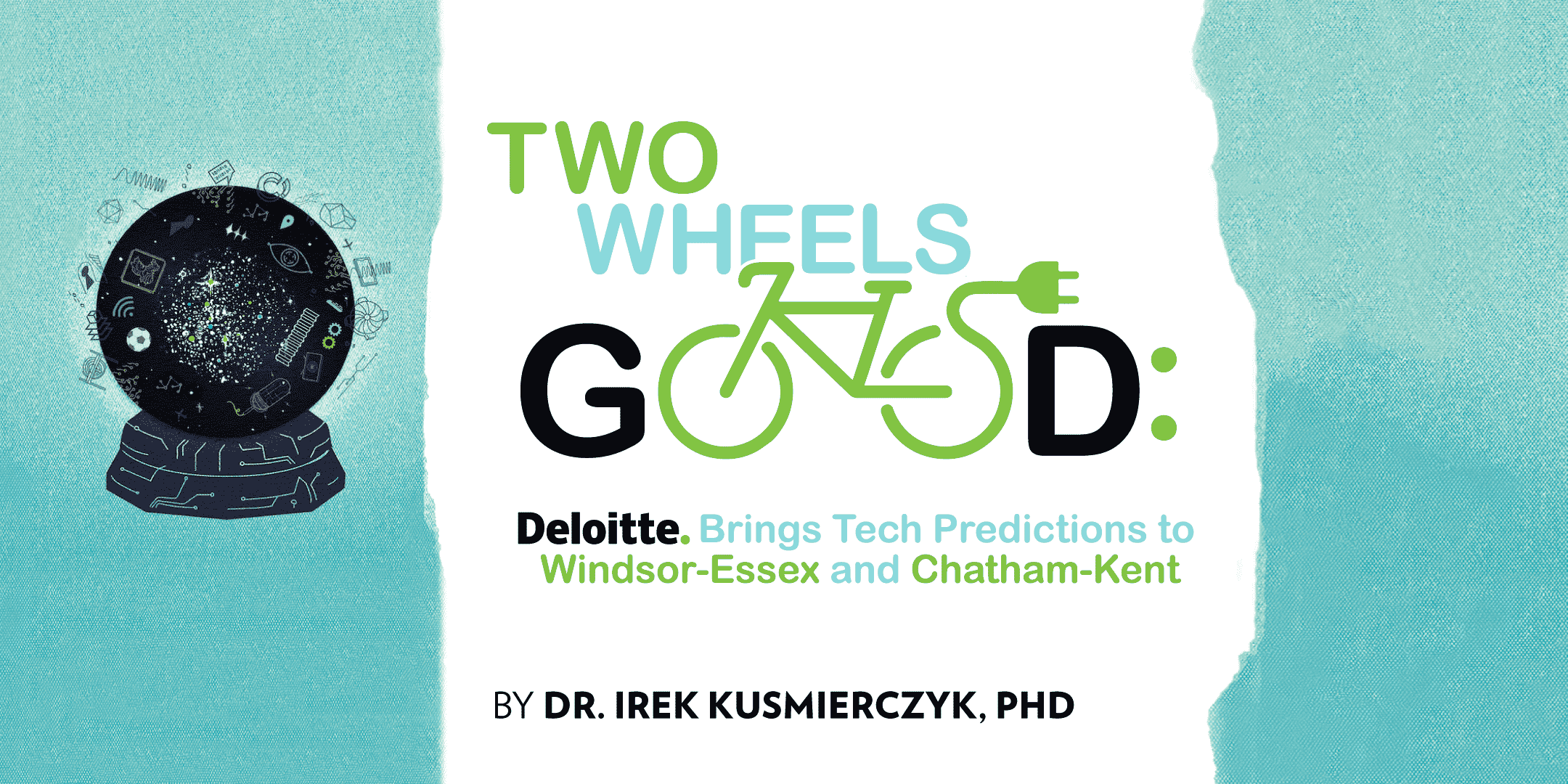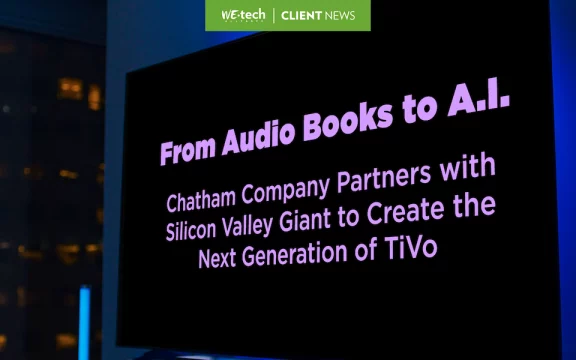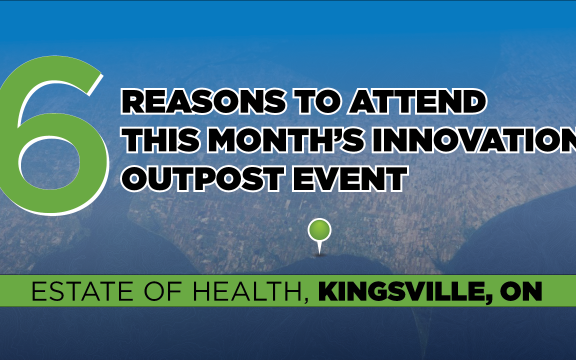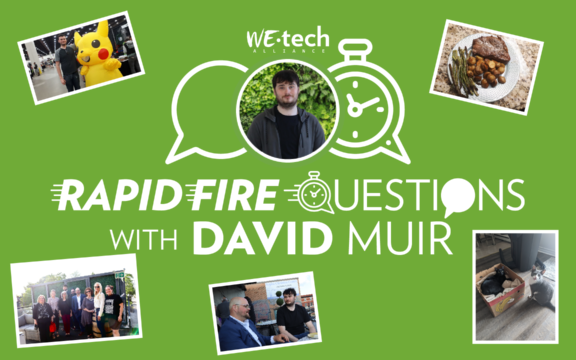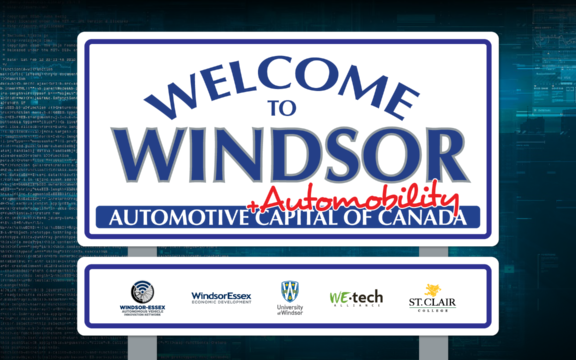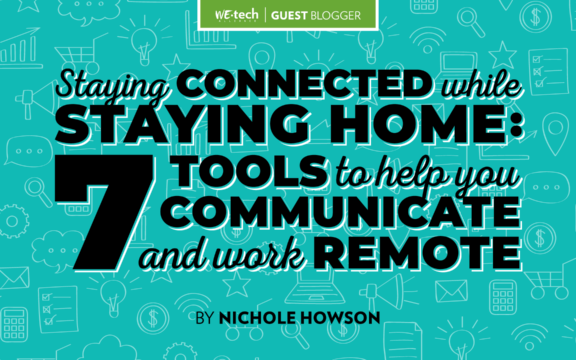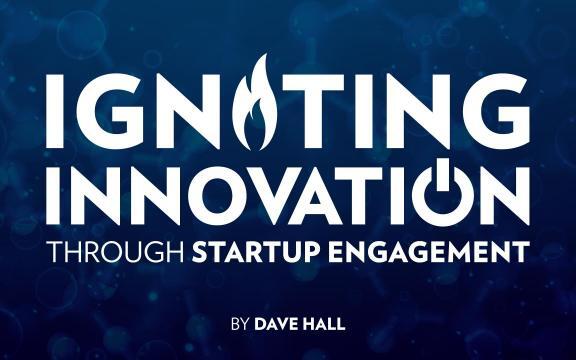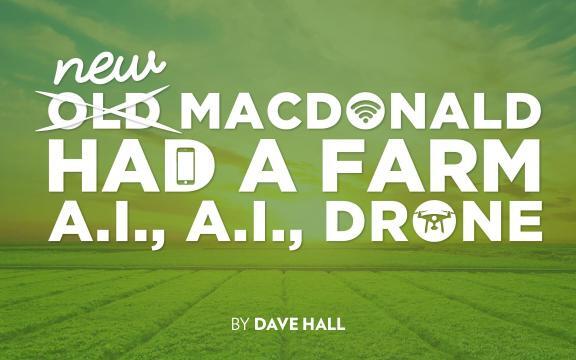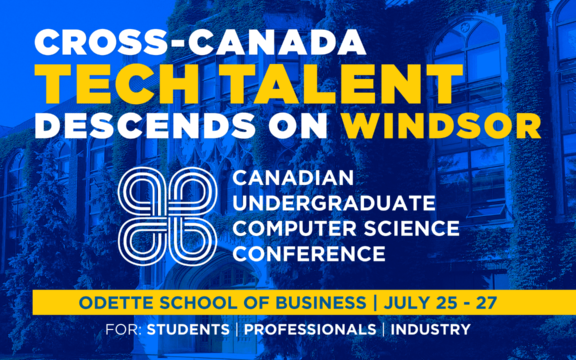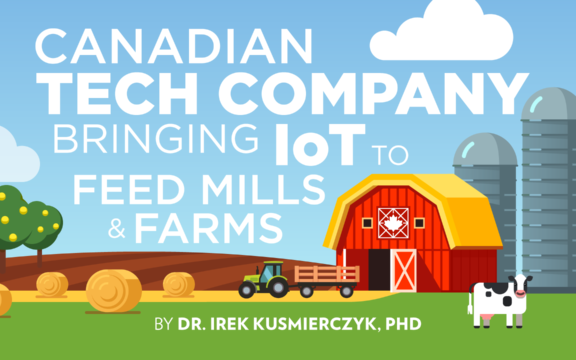“When it comes to vehicle electrification it’s two wheels good, four wheels bad” was one of the more memorable insights from globally recognized tech trend spotter Duncan Stewart on his two-stop tour through Windsor-Essex and Chatham-Kent.
Stewart is the Director of Research at Deloitte Canada and he travels the world presenting the company’s annual Technology, Media and Telecommunications (TMT) Predictions that helps audiences and enterprises make sense of the rapid changing trends in technology from 3D printing to artificial intelligence and 5G wireless among others.

About 50 people were on hand for the TMT Predictions breakfast, organized by the Windsor-Essex Regional Chamber of Commerce and sponsored by Deloitte and WEtech Alliance. Later in the day, another 50 people attended the TMT Predictions in Chatham in partnership with Chatham-Kent Economic Development.
Stewart noted that 95 per cent of all electric vehicles are electric scooters, mopeds and bikes that form part of the transformative shift towards micromobility or short-distance travel. On the other hand, the growth in passenger electric vehicles and buses will be steady but unremarkable in the short term as the cost of batteries remains a drag for consumers.
At the same time, while passenger cars will become increasingly autonomous, don’t expect completely driverless cars anytime soon – or ever.
Why the skepticism?
“Puddles,” says Stewart.
Executives at major car companies like Volkswagen have already given up the dream of reaching the ultimate level of autonomous – so-called Level 5 – because of the challenges that mother nature presents that stymie even the most sophisticated of radars and sensors.
According to Stewart the most important tech trend of 2019 is the adoption of machine learning or artificial intelligence (AI), facilitated by the advent of more powerful and cheaper chip technology, that – when married to cloud computing – provides enterprises with the equivalent of an in-house data scientist to curate and make sense of the growing deluge of data for their customers and employees.
Ignoring AI in 2020 will be like ignoring smartphones in 2010.
“AI is mission critical,” says Stewart. “Ignoring AI in 2020 will be like ignoring smartphones in 2010.”
Stewart is often asked by business owners what devices will customers be using to access their products, and he notes that that 99 per cent of all data is channelled through computers, smartphones and televisions.
The overwhelming favourite device in Canada is still the computer, while novelties like VR goggles are barely catching on with only about 7 percent of Canadians owning virtual reality gear.
“People don’t like sitting in their living room with a scuba mask on their faces,” he says.
That humour and healthy dose of skepticism towards tech hype backed by survey research and a slice of homespun realism is also a refreshing part of this self-described technophile’s pitch.

Stewart’s presentation is accessible even to the staunchest Luddite, but he always manages to pull from his quiver a new idea or concept to satisfy the geekiest in the crowd – and this year he didn’t disappoint by introducing first timers in the audience to the Gartner Hype Cycle.
The Gartner Hype Cycle depicts how new technologies are progressing along the five stages from hype to commercial adoption, and it provides a good indication of when a technology will be ready to make an impact.
“We are now in a period of slower tech change,” says Stewart, noting that the Gartner Hype Cycle for emerging technologies in 2019 is not much different from the year prior.
The smart speaker industry is predicted to grow to $7 billion in 2019, representing a 63 percent growth rate that will make smart speakers the fastest-growing connected device in the world with a 250 million units installed base. Walk into a Best Buy and smart speakers occupy large swathes of the showroom floor.
That growth is expected to continue through 2020, but again Stewart cautions that the growth may wane if smart speakers don’t evolve beyond their current range of applications.
“Smart speakers are more expensive clock radios,” he says, backing it up with survey data from multiple countries showing people predominantly using smart speakers for music, followed by things like reminders and news.
In Canada – the top use is weather. Go figure.
The demise of the radio star is certainly premature, as the percentage of the adult population who regularly listen to radio has remained resilient at about 85 per cent over the last decade. It is a grossly undervalued advertising channel, and unlike television and newspaper, according to Deloitte, “Radio has no such existential crisis or looming demographic cliff” (TMT 2019). In fact, by 2025 young people in America (ages 18-34) will be listening to more radio per day than television, which is a trend in North America and Europe. Podcasting, meanwhile, remains niche.

Stewart also advised his audience to keep an eye on eSports – watching professionals competing at video games – which is a rising industry, though skewing heavily towards the “axe body spray” demographic with young males ages 12-34 making up 80 per cent of this $1 billion market. St. Clair College and their eSports Administration Program – as well as first-in-Canada e-Sports varsity team – will do well to thumb through the chapter On Your Marks, Get Set, Game! eSports and the Shape of Media in 2019 on page 50 of the TMT report.
A key question is whether television can capture the eSports audience and draw them away from streaming platforms – which may be a tall order for a passive technology like television that hasn’t integrated active real-time social interactions of platforms like Twitch.
The ‘factory in every home’ hype around home 3D printers circa 2014 also failed to materialize, as folks were unimpressed with printing plastic trinkets that had little functional value. However, in the manufacturing sector the growth rate of high-end, industrial 3D printers will double, especially as manufacturers are increasingly expanding their printing capabilities to include metals, which opens an avenue into the trillion-dollar metal parts manufacturing sector (Deloitte TMT Predictions 2019).
The one indisputable take away from this year’s TMT predictions, is that companies that do not adapt to technology will not survive.
“Even pulp and paper mills today deploy more robotics and automation than most people realize,” says Stewart, noting the ubiquity of telecomm, robotics and software within the 100-year-old industry.
And if ‘Big Paper’ is hopping onto the digital innovation train, then really what’s holding you back?
Want to check out Deloitte’s Technology, Media and Telecommunications Predictions 2019 full report?

Dr. Irek Kusmierczyk, PhD is the Director of Partnerships at WEtech Alliance. Irek received his PhD in Political Science from Vanderbilt University, MSc in Government from the London School of Economics, and a Bachelor of Journalism from Carleton University. He is a City Councillor representing Ward 7 in Windsor and works on the Planning & Economic Development Standing Committee, Windsor Public Library, Tourism Windsor Essex & Pelee Island, and the Essex Regional Conservation Authority among others.



